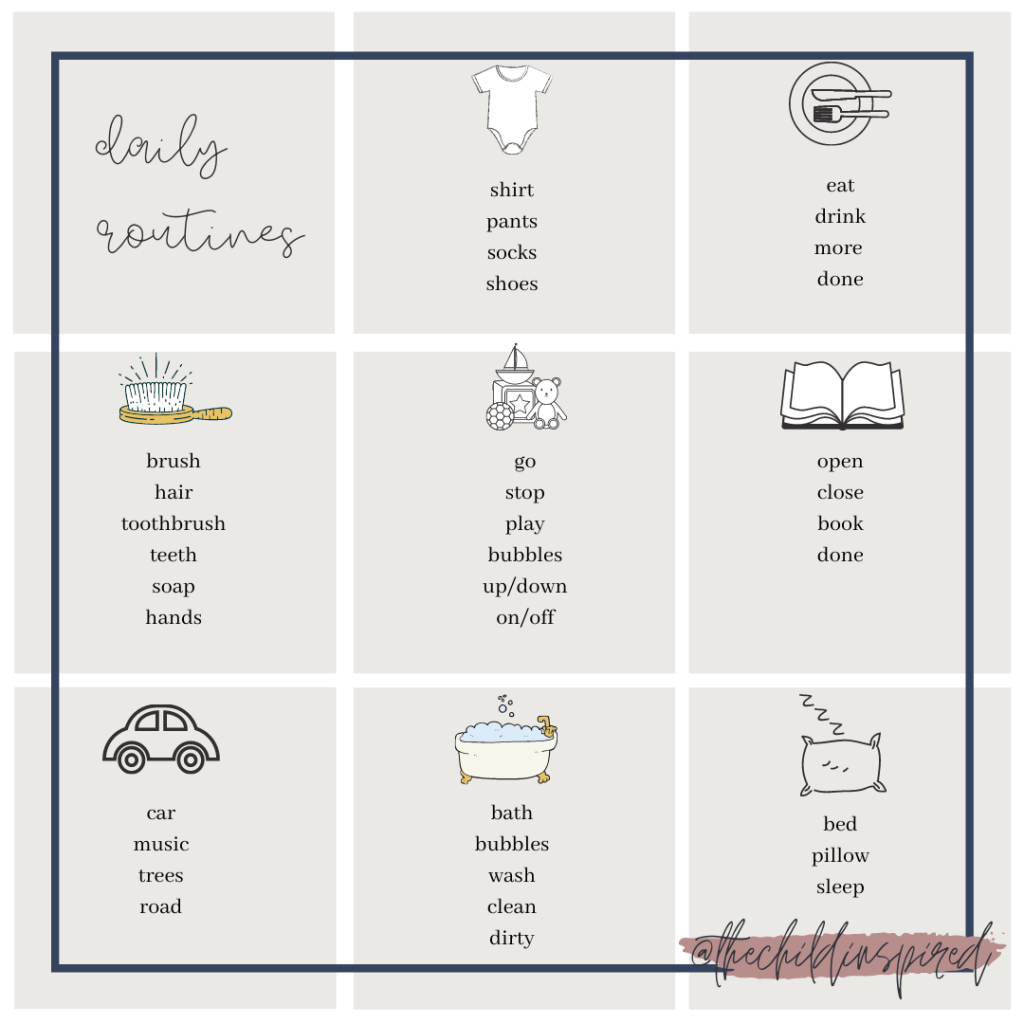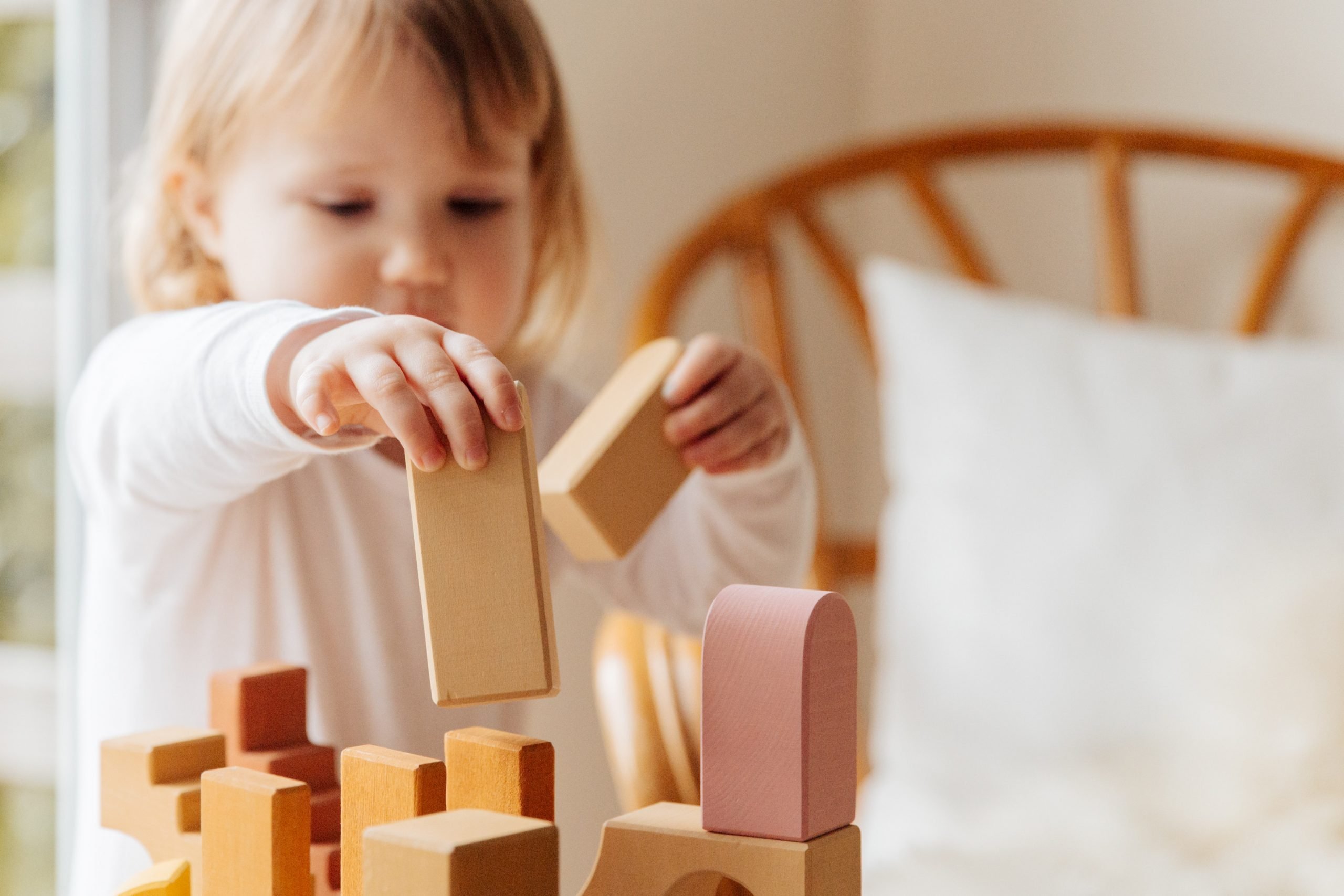Language development starts the moment your child is born. When your baby cries, you’ll quickly learn that there is meaning behind each cry. Your baby might cry because they are hungry or tired which will result in you either feeding them or rocking them to sleep. Eventually Your baby will learn that when they cry, you’ll respond with what they need. This is a basic form of communication!
When I ask parents what they would like to focus on in therapy, I often hear that they want to work on their child knowing their letters, numbers, shapes, and colors. While knowing our letters, numbers, shapes, and colors is a skill we should all learn, it should come after we have a solid foundation of functional words.
#1: Function Comes First
So, how do we make the jump from crying to using complete sentences? We first need to focus on developing your child’s vocabulary with functional words. Meaning, using words to get their basic wants and needs met.
The older your child gets, the more functional their language becomes. First words will typically include many nouns like mom, dad, ball, apple, bubbles, book, cup and a few verbs like play, go, jump, run. These will all get their basic wants and needs met. Eventually, your child’s utterances will expand and they will be able to ask things like, “Mom, I’m hungry. Can I have a snack?” instead of crying (hopefully!).
#2: Daily Routines Are….. Daily
Think about your daily routines. These are things you do every single day. Your day will include mealtimes, getting dressed, bath time, play time, going out (errands, parks, restaurants, etc.). This will become your roadmap for getting your child to communicate.

By focusing on your words from daily routines, you are naturally going to repeat them often, speeding up the learning process. You’ll notice that your toddler’s first words will be mostly nouns, maybe a few verbs. After your toddler is consistently using around 50 words they’ll be able to start combining these words into short phrases.
Babies “learn” words they hear more frequently and will listen longer to sounds they’ve heard before, that is, tune in.
Thirty Million Words: Building A Child’s Brain by Dana Suskind, MD

If your toddler has a solid foundation of functional words, they are better equipped to communicate their wants and needs. The goal is for your child to say “eat [an] apple” instead of “red circle” when asked what they want to eat.
If you want to learn more about how to implement these strategies into your daily routines, The Child Inspired offers Parent Coaching sessions to help with just that.
Let me know your thoughts! Comment below or send a message straight to my inbox!



